TETRYL
Synonym(s):Methyl-2,4,6-trinitrophenylnitramine
- CAS NO.:479-45-8
- Empirical Formula: C7H5N5O8
- Molecular Weight: 287.14
- MDL number: MFCD00426763
- EINECS: 207-531-9
- SAFETY DATA SHEET (SDS)
- Update Date: 2024-12-18 14:08:52
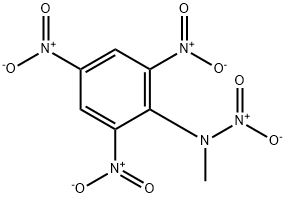
What is TETRYL?
Description
This fully reduced quinoline type alkaloid has recently been obtained from the above-ground parts of Nitraria schoberi. The structure has been determined by ultraviolet, infrared, NMR and mass spectrometry. One hydroxyl and one methyl group are present and the alkaloid may be dehydrogenated in the presence of Pd-C to furnish 8-methylquinoline.
Chemical properties
Yellow crystals. Insoluble inwater; soluble in alcohol, ether, benzene, glacial acetic acid.
Chemical properties
Tetryl is a colorless to yellow, odorless crystalline solid. High explosive material.
The Uses of TETRYL
Tetryl is used as an initiator for many less sensitive explosives. It is used as the booster in artillery ammunition. A combination of Tetryl with trinitrotoluene and a small amount of graphite is known as Tetrytol, an explosive used as the bursting charge in artillery ammunition. It is also used as an indicator.
Tetryl is made by reacting 2,4-dinitrochlorobenzene with methylamine and nitrating the product with nitric acid and sulfuric acid.
The Uses of TETRYL
As indicator, 0.1 g in 60 ml alcohol with water to make 100 ml. pH: 10.8 colorless, 13.0 reddish-brown. One to five drops of solution required for 10 ml liquid. Salt error said to be small. Also used in explosives.
The Uses of TETRYL
Once widely used as a military explosive but no longer manufactured or used in the United States.
Definition
ChEBI: A nitramine that is methylamine in which one of the hydrogens attached to the nitrogen is substituted by a nitro group while the other is substituted by a 2,4,6-trinitrophenyl group. A yellow crystalline powder, it is a high explosive, capable of being det nated by friction, shock, or a spark.
General Description
A yellow crystalline solid high explosive. Toxic by ingestion and skin absorption. A skin irritant. Will explode if heated above 370°F. Used as a detonating explosive. The primary hazard is the blast of an instantaneous explosion and not flying projectiles and fragments.
Reactivity Profile
During the measurement of the shock sensitivity of a mixture containing hydrazine, a drop of the hydrazine mixture fell on a TETRYL explosive. The TETRYL immediately burst into flames (ASESB 105).
Hazard
Dangerous fire and explosion risk. Skin irritant, absorbed by skin. Upper respiratory tract irritant.
Health Hazard
There is very little information on the human toxicity of this compound. A dose of 5000 mg/kg given subcutaneously was lethal to dogs (NIOSH 1986).
Fire Hazard
MAY EXPLODE AND THROW FRAGMENTS 1600 meters (1 MILE) OR MORE IF FIRE REACHES CARGO.
Safety Profile
Mutation data reported. An irritant, sensitizer, and allergen. The chief effect from exposure is dermatitis. Conjunctivitis is followed by iridocyclitis, and keratitis can occur. Sensitization produced by exposure may play a part in these symptoms. Gastrointestinal effects and anemia have also been reported. A powerful oxidant. A dangerous fire and explosion hazard. A high explosive sensitive to shock, friction, or heat. More sensitive to shock and friction than TNT. Explodes on contact with trioxygen difluoride. Ignites on contact with hydrazine. When heated to decomposition it emits toxic fumes of NOx. See also NITRATES and EXPLOSIVES, HIGH.
Potential Exposure
Tetryl is used in explosives; as an intermediary detonating agent; and as a booster charge for military devices; it is also used as a chemical indicator. No longer manufactured or used in the United States.
Carcinogenicity
A number of in vitro genotoxic assays in bacteria and fungi suggest that tetryl is a directacting genotoxin.
Environmental Fate
Chemical/Physical. Produces highly toxic nitrogen oxides on decomposition (Lewis, 1990).
Shipping
UN0208 Tetryl, Hazard Class: 1.1D; Labels:1.1D-Explosives (with a mass explosion hazard); D-Substances or articles which may mass detonate (with blast and/or fragment hazard) when exposed to fire.
Incompatibilities
Violent reaction with hydrazine; reducing agents, oxidizable materials. May explosively decompose from heat, shock, friction, or concussion. Explosive decomposition/detonation from heat takes approximately 1000 seconds @ 160℃; 0.1 seconds @ 500℃.
Waste Disposal
Solution in acetone and incineration in furnace equipped with afterburner and caustic soda solution scrubber.
References
Novgorodova, Maekh, Yunusov., Khirn. Prir. Soedin., 9, 196 (1973)
Properties of TETRYL
| Melting point: | 130–132°C |
| Boiling point: | 429.46°C (rough estimate) |
| Density | 1.57 |
| vapor pressure | <1 at 20 °C (NIOSH, 1997) |
| refractive index | 1.8000 (estimate) |
| Flash point: | 2℃ |
| storage temp. | 2-8°C |
| solubility | Solubility Insoluble in water; soluble in ethanol, ether, benzene, acetic acid |
| form | crystals |
| pka | 12.66(at 25℃) |
| color | Yellow |
| PH Range | 11(colourless)-13(brown) |
| Water Solubility | 0.02 wt % at 20 °C (NIOSH, 1997) |
| Henry's Law Constant | <1.89 at 20 °C (approximate - calculated from water solubility and vapor pressure) |
| Exposure limits | (mg/m3): NIOSH REL: 1.5, IDLH 750; OSHA PEL: TWA 1.5; ACGIH TLV:
TWA 1.5 (adopted). |
| Major Application | Explosives, paints, food storage |
| EPA Substance Registry System | Tetryl (479-45-8) |
Safety information for TETRYL
| Signal word | Danger |
| Pictogram(s) |
 Flame Flammables GHS02  Exclamation Mark Irritant GHS07 |
| GHS Hazard Statements |
H225:Flammable liquids H319:Serious eye damage/eye irritation |
| Precautionary Statement Codes |
P210:Keep away from heat/sparks/open flames/hot surfaces. — No smoking. P261:Avoid breathing dust/fume/gas/mist/vapours/spray. P337+P313:IF eye irritation persists: Get medical advice/attention. P403+P235:Store in a well-ventilated place. Keep cool. |
Computed Descriptors for TETRYL
New Products
(S)-3-Aminobutanenitrile hydrochloride 4-Methylphenylacetic acid N-Boc-D-alaninol N-BOC-D/L-ALANINOL Tert-butyl bis(2-chloroethyl)carbamate 3-Morpholino-1-(4-nitrophenyl)-5,6-dihydropyridin- 2(1H)-one Furan-2,5-Dicarboxylic Acid Tropic acid 1-Bromo-3,5-Di-Tert-Butylbenzene S-2-CHLORO PROPIONIC ACID ETHYL ISOCYANOACETATE 2-Bromo-1,3-Bis(Dimethylamino)Trimethinium Hexafluorophosphate 4-IODO BENZOIC ACID 3-NITRO-2-METHYL ANILINE 1-(2,4-DICHLOROPHENYL) ETHANAMINE (2-Hydroxyphenyl)acetonitrile 4-Bromopyrazole 2-(Cyanocyclohexyl)acetic acid 4-methoxy-3,5-dinitropyridine 1-(4-(aminomethyl)benzyl)urea hydrochloride 2-aminopropyl benzoate hydrochloride diethyl 2-(2-((tertbutoxycarbonyl)amino) ethyl)malonate tert-butyl 4- (ureidomethyl)benzylcarbamate Ethyl-2-chloro((4-methoxyphenyl)hydrazono)acetateRelated products of tetrahydrofuran

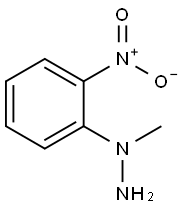
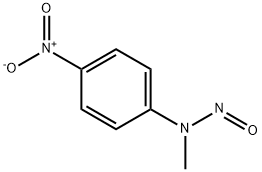
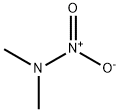
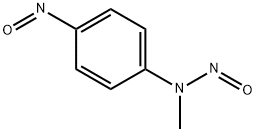

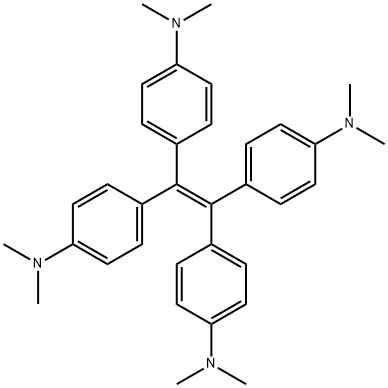

You may like
-
 2033-24-1 98%View Details
2033-24-1 98%View Details
2033-24-1 -
 42831-50-5 5-METHYLISOXAZOLE-4-CARBOXYLIC ACID 98%View Details
42831-50-5 5-METHYLISOXAZOLE-4-CARBOXYLIC ACID 98%View Details
42831-50-5 -
 1975-50-4 98%View Details
1975-50-4 98%View Details
1975-50-4 -
 2-HYDROXY BENZYL ALCOHOL 98%View Details
2-HYDROXY BENZYL ALCOHOL 98%View Details
90-01-7 -
 2-Chloro-1,3-Bis(Dimethylamino)Trimethinium Hexafluorophosphate 221615-75-4 98%View Details
2-Chloro-1,3-Bis(Dimethylamino)Trimethinium Hexafluorophosphate 221615-75-4 98%View Details
221615-75-4 -
 61397-56-6 CIS BROMO BENZOATE 98%View Details
61397-56-6 CIS BROMO BENZOATE 98%View Details
61397-56-6 -
 14714-50-2 (2-Hydroxyphenyl)acetonitrile 98+View Details
14714-50-2 (2-Hydroxyphenyl)acetonitrile 98+View Details
14714-50-2 -
 118753-70-1 98+View Details
118753-70-1 98+View Details
118753-70-1